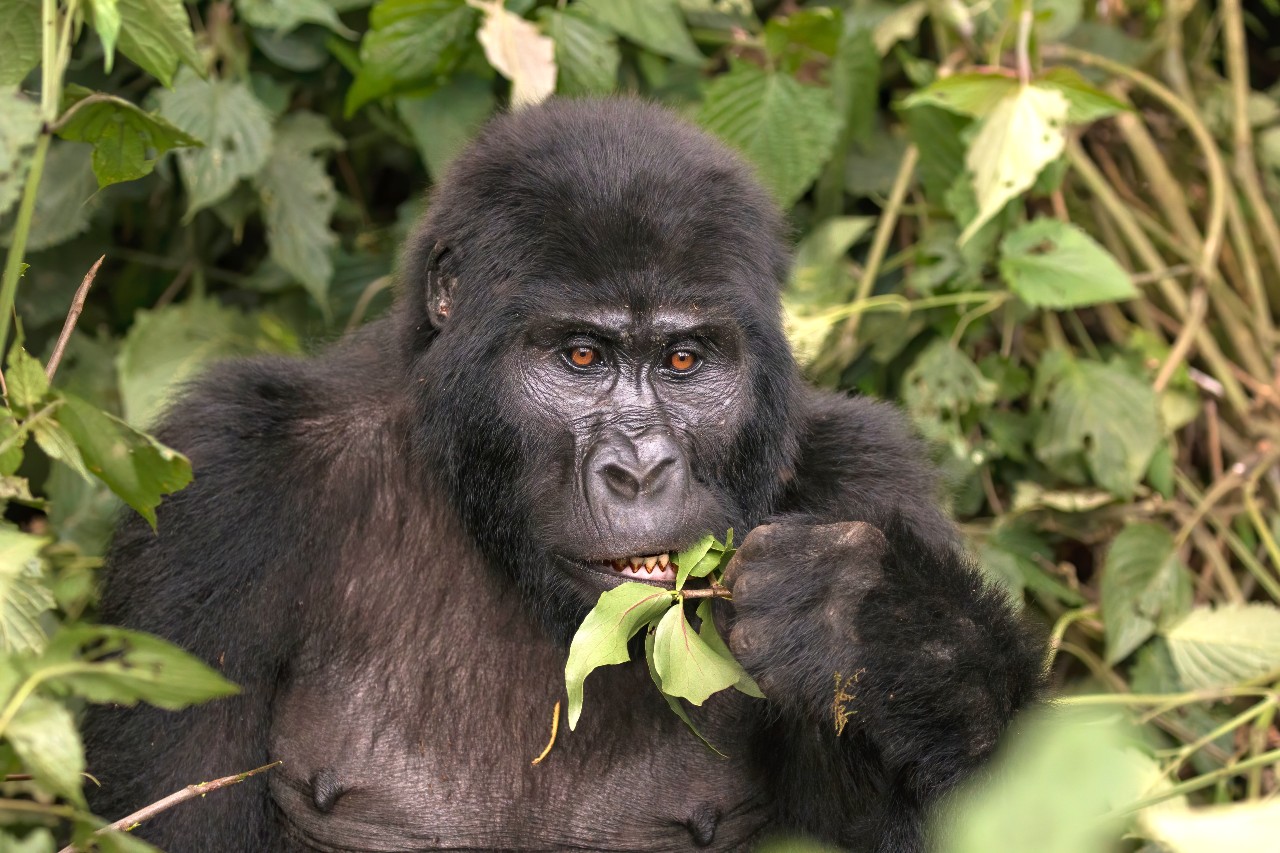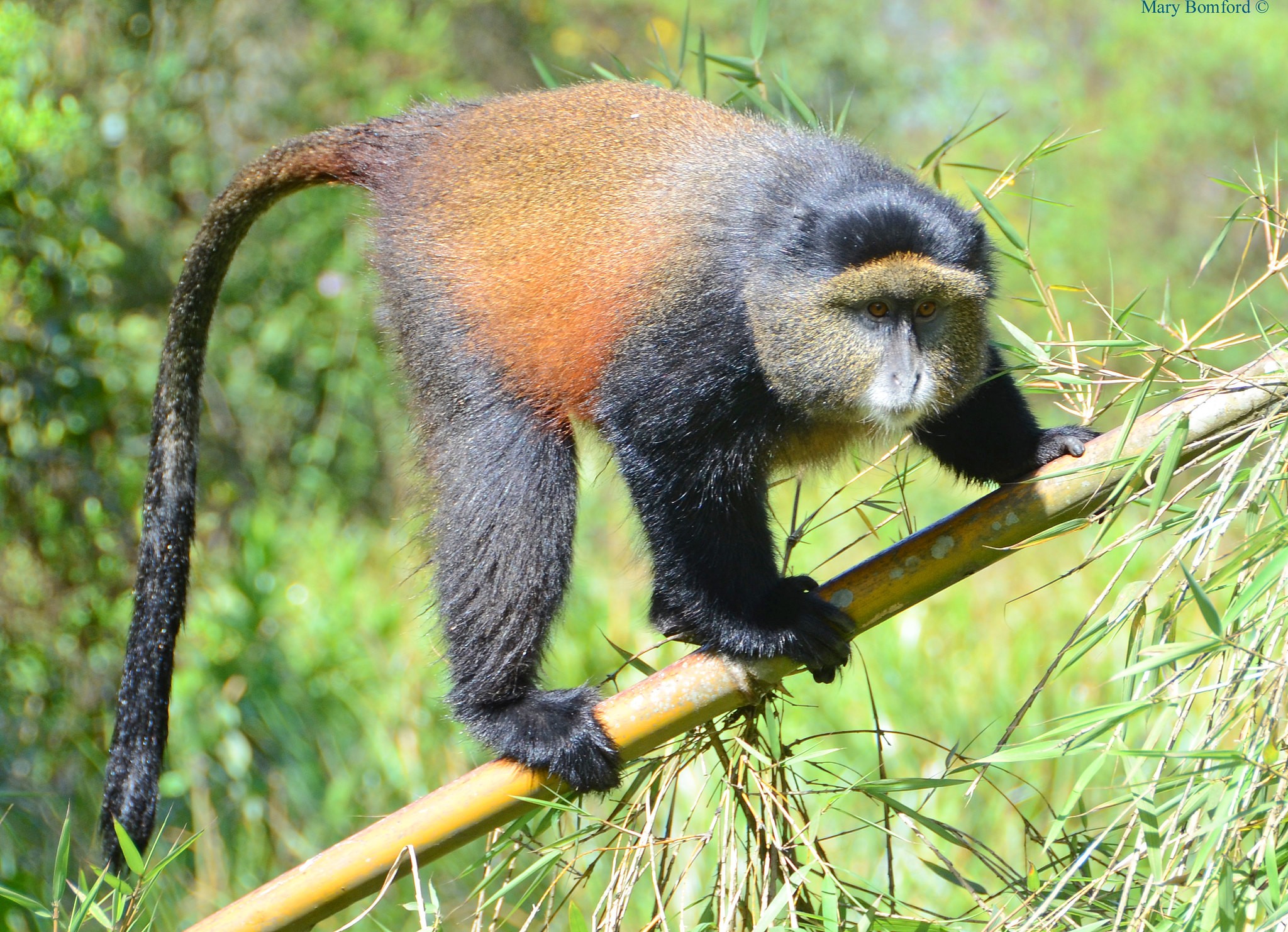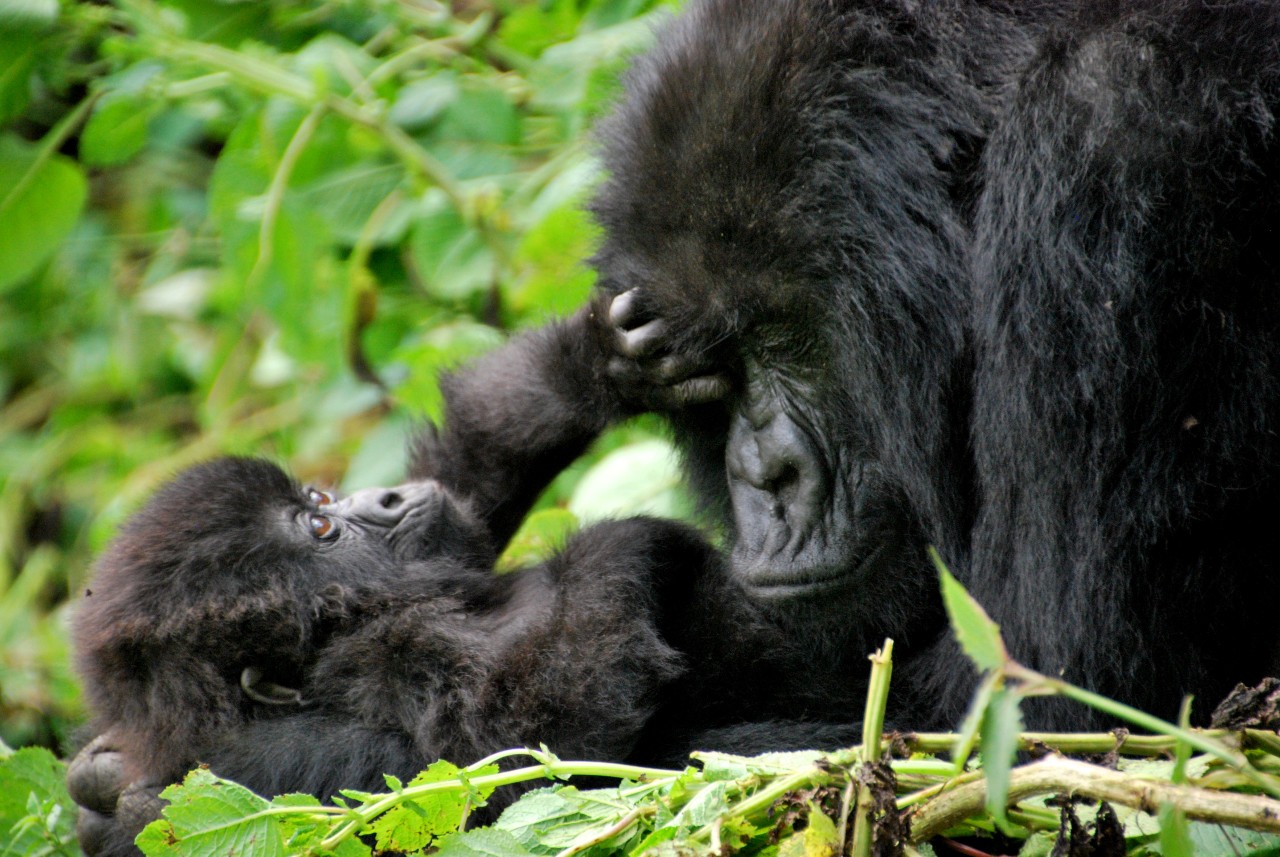Rwanda is one of the smallest countries in Africa, but despite this, it has much to offer. Its strong ethos of conservation and eco-tourism, as well as community involvement, along with its exceptional wildlife experiences, is what brings many tourists to the country each year. Here are four exceptional experiences that combine trekking and wildlife.
Mountain Gorilla
The unique opportunity to see gorillas in their natural habitat is surely on every conservationist and safari traveller’s bucket list. The equatorial rainforests of the volcanic Virungu Mountains range, which spans Rwanda, Uganda and the Democratic Republic of the Congo, are home to the endangered mountain gorilla (Gorilla beringei beringei). The plight of the mountain gorillas, and their fight against poaching, was made famous by Dian Fossey’s book, and subsequent movie, Gorilla’s in the Mist. The book is an account of her 13-year scientific study of gorillas at the Karisoke Research Center, a research institute in Rwanda’s Volcanoes National Park.

Recent counts suggest that there are approximately 1,000 mountain gorillas in the wild, with most of them in the Virunga Massif. It is thanks to concerted efforts of governments, communities, and NGOs that the population is slowly increasing. There are ten habituated gorilla families living in the Volcanoes National Park, with each of the groups, or troops, consisting of at least one silverback along with several females and youngsters.
Tracking gorillas here is considered safe and relatively accessible. Expert trackers and guides lead small groups of up to eight tourists up bamboo-covered slopes to watch the gorillas as they go about their daily lives. This experience is carefully managed, enabling visitors to spend an awe-inspiring and memorable hour in relatively close proximity to the gorillas without disturbing them.
The troops are constantly monitored and protected by park rangers, with each group coming into contact with tourists for a strict maximum of one hour per day.
Golden Monkey
Also unique to the Virunga Mountains range, the endangered golden monkey (Cercopithecus mitis kandti) is endemic to the high-altitude forests of the Volcanoes National Park area.

Spend a morning trekking through the relatively flat terrain and lush vegetation at the foot of Mount Sabyinyo for one of two habituated groups of golden monkeys – one comprising around 80 – 100 members. The monkeys are playful and inquisitive and much of their time is spent leaping around on bamboo branches or frolicking and tumbling in the dense vegetation of the forest floor. They are easily recognised by their shiny reddish-gold backs and shimmering faces, camouflage that enables them to blend perfectly with the golden bamboo.
Colobus Monkey
As the largest high altitude montane forest in Africa, covering about 1,600 to 2,000 square kilometres, the forest of the Nyungwe National Park is rich in biodiversity and offers breath-taking scenery over the forest as well as Lake Kivu. This mountainous region in Rwanda is also home to a small population of chimpanzees as well as 12 other species of primate – with one of the highlights being a guided tour to track the large troops of black and white Angolan Colobus monkeys (which may have as many as 400 members in every troop).

This special monkey of the Nyungwe forest is the Rwenzori Colobus (Colobus angolensis rwenzori), a subspecies of the Angolan Colobus monkey species – distinctive with its black-and-white coat, tufty shoulder-pads and a mohawk. Approach quietly and watch as these active and social monkeys play together, groom one another, swamp the branches of fruiting trees, eat the lichen off the branches of old trees, or come down to eat the clay ground or forage on herbs beneath the trees. Other monkey species commonly sighted with the colobus monkeys are the blue monkeys, Mona monkey, and Mangabey monkey.
Chimpanzee
One of the most popular activities in the Nyungwe National Park is chimpanzee tracking. There are approximately 500 chimpanzee individuals in the forest living within troops of varying sizes, two of which are habituated to visitors. Chimpanzees (Pan troglodytes) are sociable creatures, live in extended communities and move around every day, foraging for food or occasionally hunting smaller mammals – and each night they stop to build fresh nests in the trees.

The guided hikes to track the chimpanzees start early, at around 5.30am, and can last anything from an hour to several hours depending on the location of the chimps – there are trackers that go ahead to try and find the exact location of the chimps. Generally, you will hear the chimpanzees before you see them, as their vocalisations as they call to each other reverberate through the forest. This is considered to be a sort of bonding ritual. Once located, visitors spend a maximum of one hour with them. The rugged terrain is often steep, slippery and muddy, and passes through thick vegetation so suitable footwear as well as a certain level of fitness is essential.
Images – Mountain Gorillas -Wikimedia, Golden Monkey – Mary Blomford Flickr, Angolan Colobus Monkey – Gunther Eichhorn Flickr, Chimpanzee – Wikimedia

